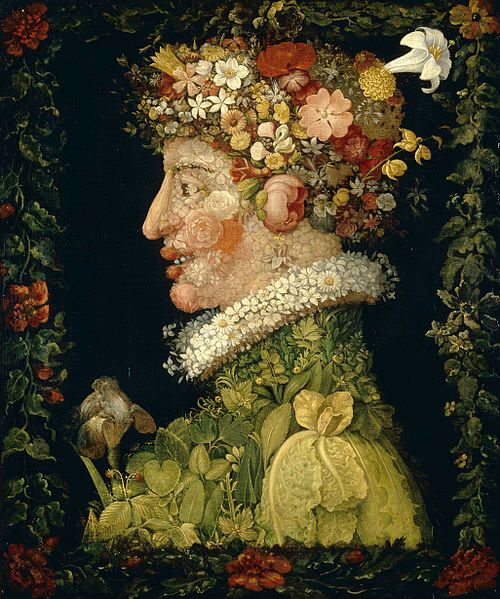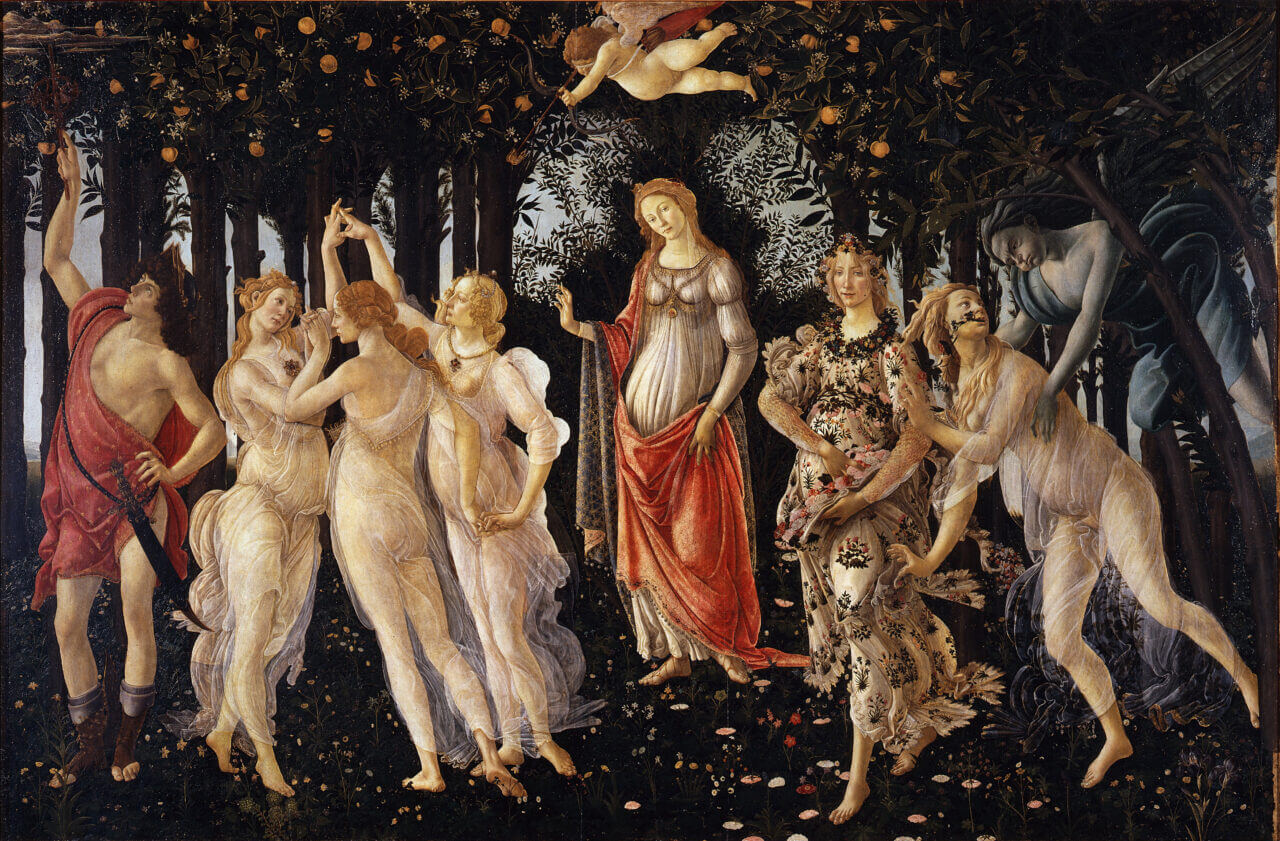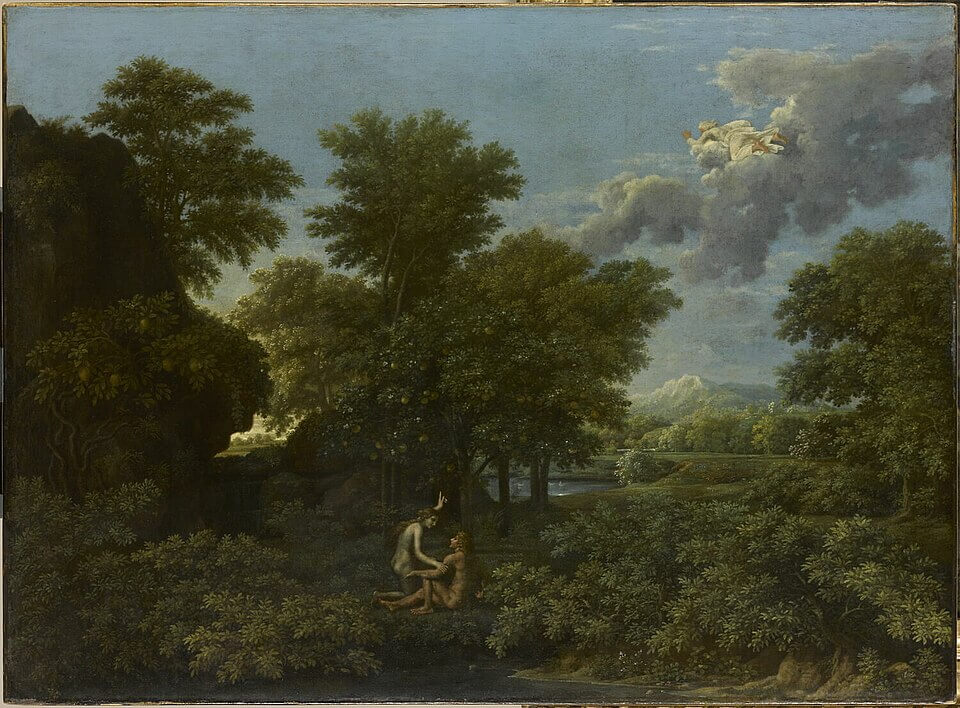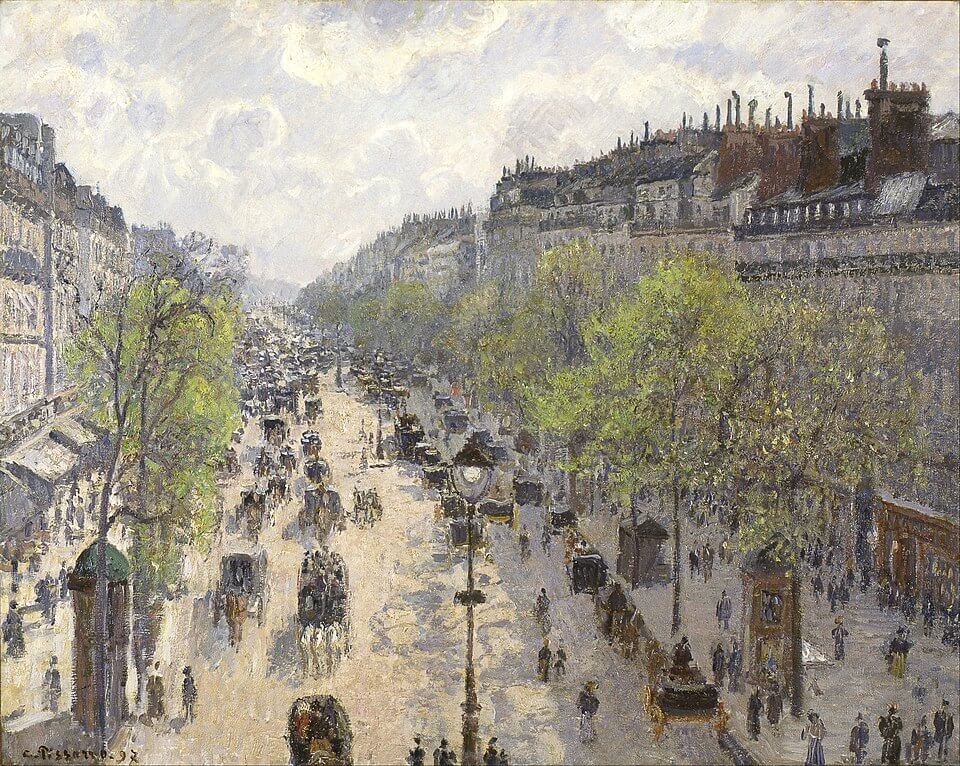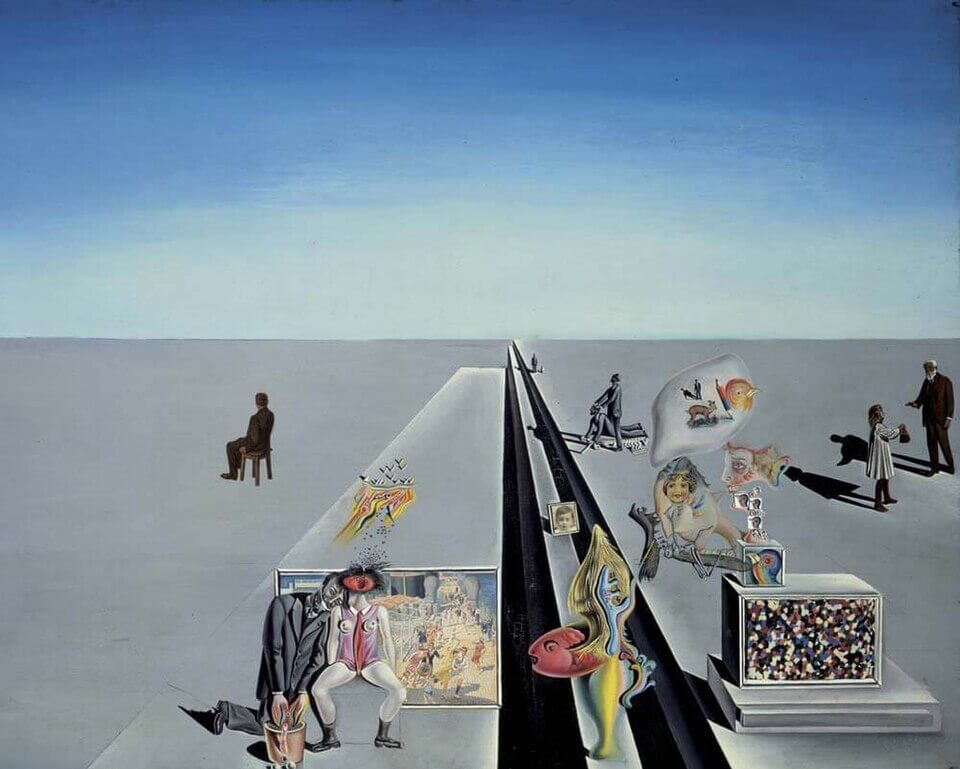Sandro Botticelli (c. 1445 – 1510), Primavera, late 1470s or early 1480s,
Galleria degli Uffizi, Florence
Our selection begins with perhaps the most recognisable of springtime paintings, Botticelli’s Primavera. Depicting nine mythological figures in an orange grove, the painting is first thought to have hung in the house belonging to the Medici family in Via Cavour in Florence, before being moved to the grander Villa di Castello (another of their family properties just outside the city) where Giorgio Vasari describes it hanging together with Botticelli’s other great masterpiece, The Birth of Venus (c. 1485). At the centre of this image, Venus, goddess of love and beauty, surveys a group of dancing graces to her right, whilst to her left the nymph Chloris is transformed into Flora, the goddess of Spring; clothed in a diaphanous dress covered in floral motifs, she is perhaps the most memorable of Botticelli’s figures.
Giuseppe Arcimboldo (1527 – 1593). Spring, 1573, Musée du Louvre, Paris
Whilst allegorical imagery is relatively common in art, Arcimboldo’s depictions of The Four Seasons are undeniably unique. Composed of fruit and floral specimens, these “seasonal series” were first begun in 1563 and – with the exception of Autumn – the original versions of the artist’s first cycle survive to this day. In this abundant representation of Spring, which comes from a later series, it is not only the figure that is made up of nature’s produce but also the border of the painting which is a tangle of leaves and red blooms. Arcimboldo has made use of the plentiful fruits and foliage that thrive in Spring to characterise the figure itself. Most noticeable are the daisy-like flowers that form the sitter’s ruff collar and the brassica – perhaps a cabbage – that denotes the figure’s shoulder, as well as an unfurling rose that has been used to represent the ear. This bright, verdant painting, as well as the artist’s depiction of Summer, is a world apart from his muted and relatively bare representations of Autumn and Winter.
Nicolas Poussin (1594 – 1665), Spring, 1660-64, Musée du Louvre, Paris
Thought to have been painted for the 2nd Duke of Richelieu between 1660 and 1664, this painting by Poussin is known by a number of titles – Spring, The Earthly Paradise and even Adam and Eve in the Earthly Paradise. As part of the artist’s Four Seasons cycle of paintings, this work explores the themes of fertility and plenty. The addition of Adam and Eve, the first man and woman, is therefore an appropriate one and we see the moment in which Eve draws Adam’s attention to the apples growing in abundance from the trees above their heads. This set of four large canvases, which hang alongside one another in the Louvre, are widely considered the last masterpieces of the artist’s life and indeed, in his usual way, Poussin has skilfully depicted a dense canopy of lush trees giving way to an ethereal landscape of mountains and a brilliant blue sky beyond.
Camille Pissarro (1830 – 1903), Le Boulevard de Montmartre, Matinée
de Printemps, 1897, Private Collection
On 10th February 1867, Camille Pissarro took a room at the Grand Hôtel de Russie in Paris. Below, the Boulevard Montmartre – constructed just twenty years before – bustled with bourgeois society. So inspired was he by the view from his window that Pissarro immortalised it in a series of fourteen paintings, including Le Boulevard de Montmartre, Matinée de Printemps. Completed between February and April 1897, the series epitomises the style and approach of the French Impressionists, who were known to work in series; by focussing upon and revisiting one motif or subject, they were able to explore a variety of conditions, particularly changes in light. Here, the artist has perfectly captured the clarity of an early spring morning: sunlight radiates from beyond the Haussmannian buildings, horse-drawn carriages fade into a haze upon the horizon and the verdant canopy of plane trees appear to dance in the breeze. This all-encompassing pictorial description of the sights and sounds of Spring undoubtedly make the work of Camille Pissarro some of the most enduring of all Impressionist paintings.
Salvador Dalí (1904 -1989), The First Days of Spring, 1929, Salvador Dalí Museum, St Petersburg, FL
An even more modern interpretation of the season of Spring is Salvador Dalí’s The First Days of Spring. Although it is a distinctly Surrealist image, with objects and symbolism thought to have been inspired by Sigmund Freud’s The Interpretation of Dreams, the scene shares similarities with both Poussin’s and Pissarro’s depictions in the brilliant sky and far-reaching horizon. This barren blue-grey landscape acts as a stage set for Dalí’s dream-like motifs, including a lone silhouetted man without a shadow sitting in a chair, an imagined colourful coral or fish-like creature and a photograph of Dalí as a child in the centre. Whether we understand the artist’s meaning – if there even is a meaning at all – or not, Dalí has certainly captured the feelings of freshness, airiness and light that so clearly remind us of Spring.


